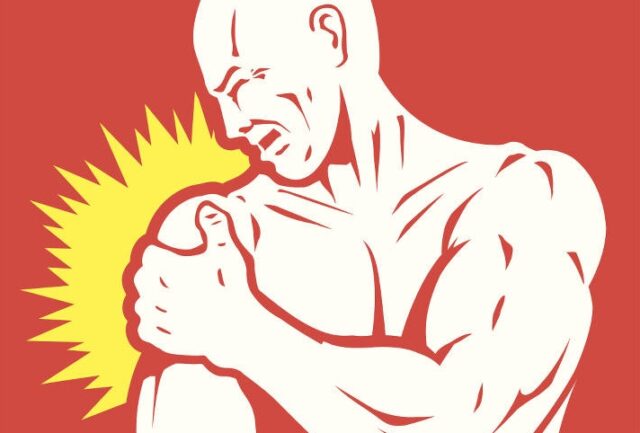In recent decades, so much has been written about the benefits of physical activity that there is almost no person who has not even tried to make an exercise plan. If you really put it into action, you could see for yourself all the benefits that exercise gives you, not only physical but also mental and social. A strong body, muscles and bones are important for good health, but also the best way to energize and increase concentration. We can fix many chronic conditions with proper and controlled physical activity, and it is certainly perfect as prevention.
However, exercising is not that simple and very often the beginnings of exercise can be very painful and strenuous. That’s why a certain number of beginners give up on this activity at the very beginning. To gain strength and endurance, healthy stress during exercise on your heart, lungs and muscles is essential. However, the pain is, within normal limits, quite expected. Fatigue and pain are signs that your body is starting to wake up and progress.
So, don’t panic: the pain is within normal limits after training. Muscle pain caused by training passes after only a few days and is related to the type of exercise you did. However, we must distinguish it from the classic pain that warns us that something in our body is not right. That is why we have dedicated this text to the ways in which you can distinguish muscle inflammation from warning pain.
Muscle inflammation

When you start using muscles that have been neglected so far, it is completely normal to feel pain. Do not expect that the pain or inflammation of the muscles will appear automatically after exercise, but it starts when the muscle starts to cool down. This is called delayed onset pain, or DOMS. Muscle fibers in this part of the muscle are very gently “split” to strengthen. It is this process that produces discomfort, fatigue and muscle pain. You will admit that this is not such a big sacrifice for what you get in return. How much pain you will feel here and for how long depends on the intensity of the exercise, but also on your previous muscle condition and activity.
If the activity you did was completely new to you and the training was intense, count on the fact that the inflammation of the muscles will be a bit stronger and will last longer. It’s your body’s reaction to having neglected a particular muscle group for a while. Therefore, it is very important to give your body time, enough rest and hydration to recover. With muscle inflammation, the most important thing is to be patient. If you continue to exercise and your muscles are inflamed, there is a chance that you will injure yourself. Some very strenuous physical activities, such as running a marathon, require a month and a half of rest.
However, having muscle inflammation does not mean that you are sick and that you need to lie down. Stay active in terms of performing daily routine duties. Only when the pain is partially reduced, start exercising again. You will enjoy light stretching, and you can certainly exercise the part of the body that is not inflamed.
Experts state that it is best to work certain body segments alternately: training day for arms, a day for legs, a day for the whole body. This way you will strengthen your muscles and your whole body evenly.
Classic pain

When you have an injury, it is mostly localized to one specific point or region. If we talk about the consequences of reckless exercise, it can usually be joints or tendons. Unlike muscle inflammation that is not felt at rest, the pain from the injury is completely different. It may be a little less if you are resting, but the pain from the injury does not stop. It is intense and sharp.
And while resting you may feel numbness, tension, or swelling. These are all signs that you have suffered an injury while exercising and that you need to do something against the injury. With each movement, the pain becomes bigger and the discomfort is stronger.
If you feel this pain, be sure to stop all the activities you have started. For starters and minor injuries, ice can be very helpful. However, this solution is short-term. If the pain persists, the best option is to seek professional help. For such and similar problems, we warmly recommend adriameduae.com.
Even if the pain is not too strong but still does not stop after 7 or 10 days, it is a sufficient sign that you need to visit a doctor. It is important to know that the severity of the injury does not always have to be proportional to the severity of the pain you are feeling. Alternatives such as physical therapy may be helpful and may be prescribed by a physiotherapist.
To summarize:
What are the main differences between muscle inflammation and pain:

- With muscle inflammation, the muscle is sensitive to touch, you feel discomfort while activating the inflamed muscle and very often you feel tired and exhausted. Unlike inflamed muscles, the pain from the injury is constant and sharp. You will most likely feel this even while at rest.
- Muscle inflammation occurs between 24-72 hours after exercise. Injury pain occurs between 5-10 hours after exercise.
- Muscle inflammation usually lasts two to 3 days. The pain from the injury usually stops only when medication is taken or the injury is cured.
- Inflammation of the muscles refers only to the muscles, while the pain from the injury can also be in the muscles, tendons, or joints.
- Muscle inflammation is improved by stretching and moving slowly. Vacation is your best friend in this situation. When it comes to pain from an injury, ice can be helpful, but it is best to see a doctor.
- Muscle inflammation worsens if you continue with strong activities and stop doing it completely. Injury pain worsens with stillness and rest.
- When you have muscle inflammation, you need to rest actively, so that the muscles are active but not completely calm. Do your daily activities smoothly until the pain goes away. In case of pain from the injury, the greatest help can be a professional, a doctor, or a physiotherapist, especially if the pain is intense or lasts a long time.




